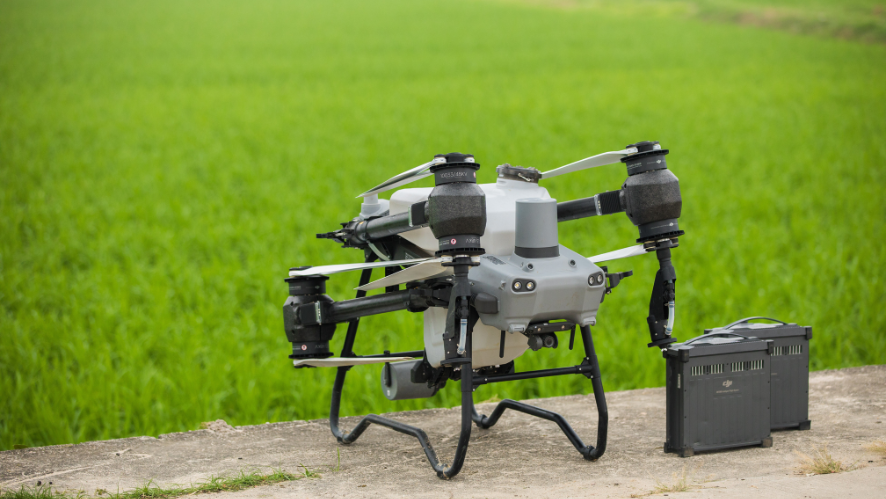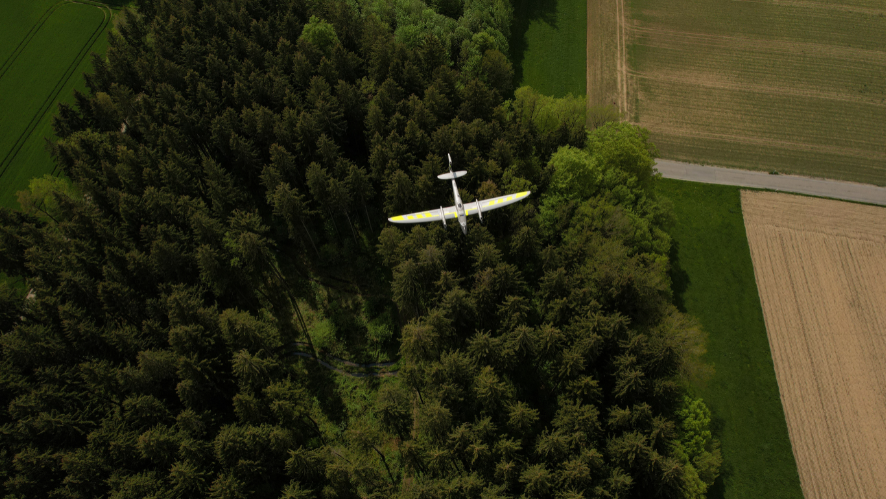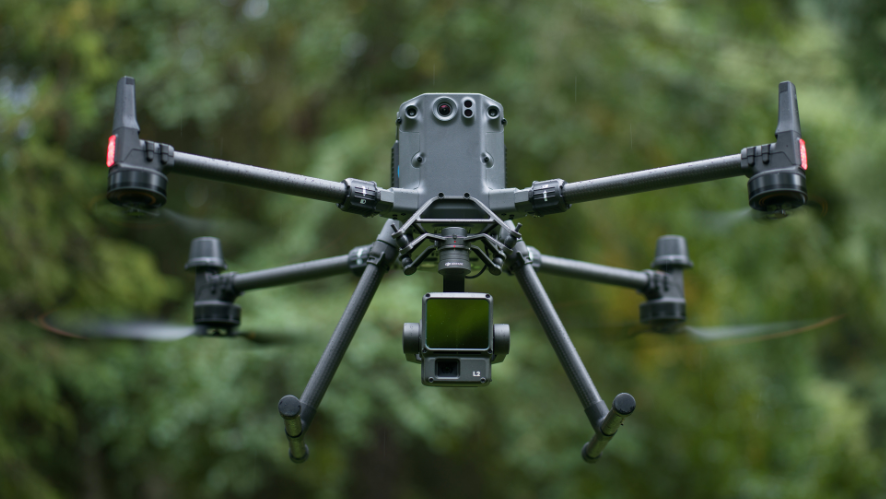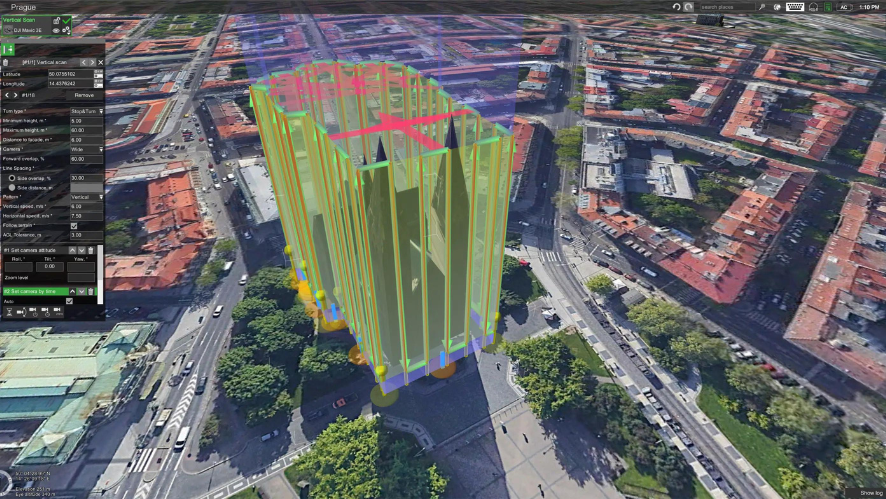DJI MATRICE 300 RTK
Robust design. Intelligent work.
AVIATION-LEVEL SITUATIONAL AWARENESS
A new standard in the business drone industry The Matrice 300 RTK is DJI’s newest commercial drone platform, drawing inspiration from the latest avionics systems. It offers a flight time of up to 55 minutes, advanced AI and a UAV status management system, among others. The M300 RTK redefines what you can expect from a business drone with a leading combination of intelligent features, high performance and reliability.
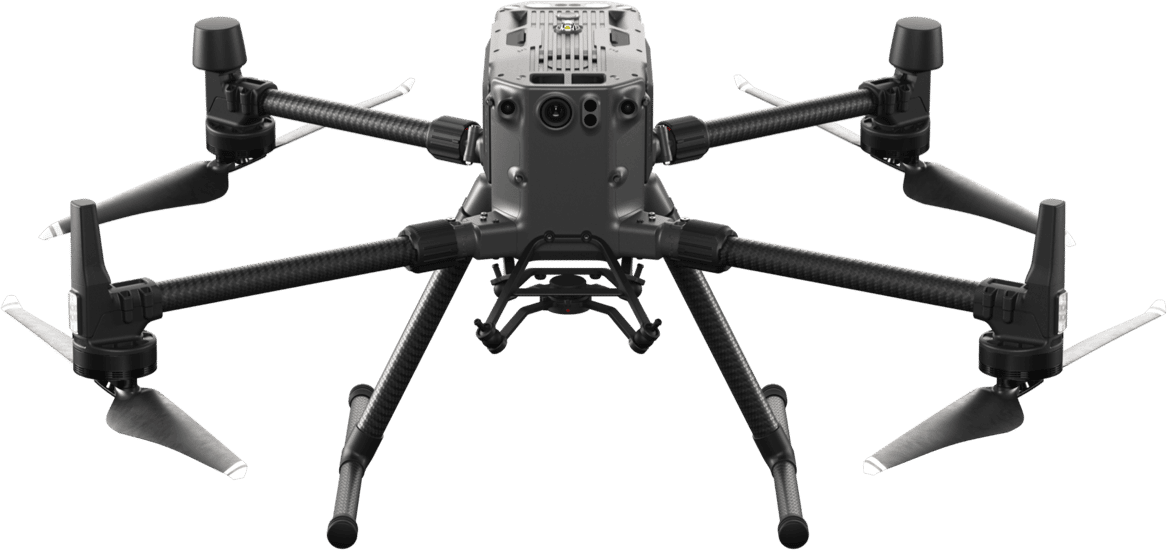
Max. transmission distance 15 km
Max. flight time 55 min
Detection and positioning in 6 directions
Main flight display
IP45 protection
Operating temperature -20 to 50 °C
Hot-swappable batteries
UAV Health management system
ENHANCED TRANSMISSION SYSTEM
The new OcuSync Enterprise allows transmission up to 8 km (CE version) or 15 km (FCC) away and supports 1080p video. Real-time video transmission is between 2.4 GHz and 5.8 GHz frequencies (frequency hopping) which enables safer flight, even in high-interference environments, while AES-256 encryption provides secure data transmission.
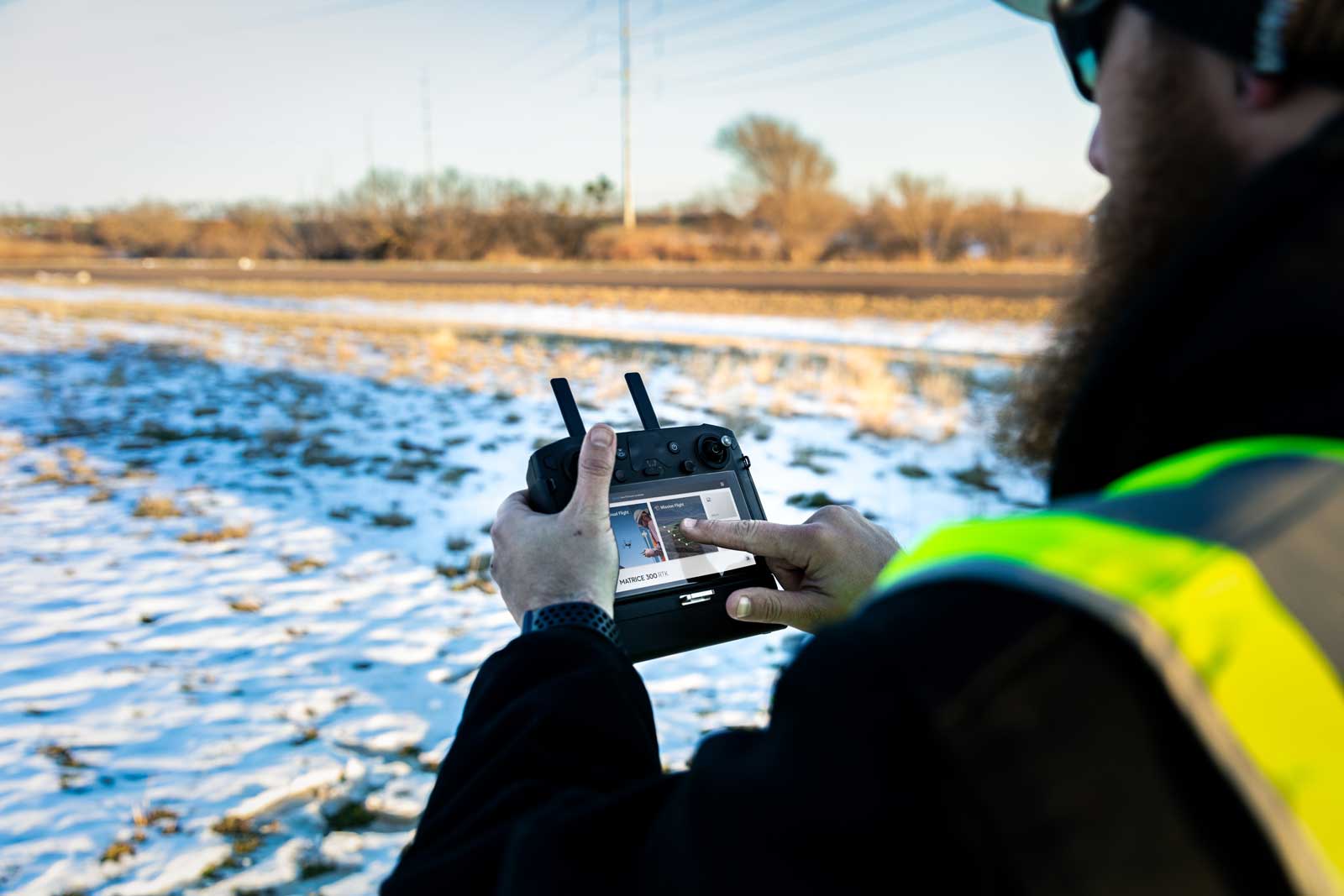
More efficient and stable flight
PERFORMANCE OF
FLIGHT
The DJI Matrice 300 RTK sets a new standard for capability and safety. The refined design of the aircraft’s airframe and propulsion system ensures a more efficient and stable flight, even in adverse and difficult conditions.
The aircraft has a wind resistance of up to 15 m/s. It benefits from an improved IP rating over its predecessor (IP45), which means this new drone can withstand more extreme conditions.
MAXIMUM FLIGHT TIME
The drone’s maximum flight time is 55 minutes (without payload) or 31 minutes when at its maximum take-off weight of 9kg (6.3kg drone + 2.7kg payload).
When charging the new H2OT sensor, the Matrice 300 RTK can stay airborne for up to 42 minutes (hovering), or 45 minutes when integrated with an XT2 or Z30 (hovering).
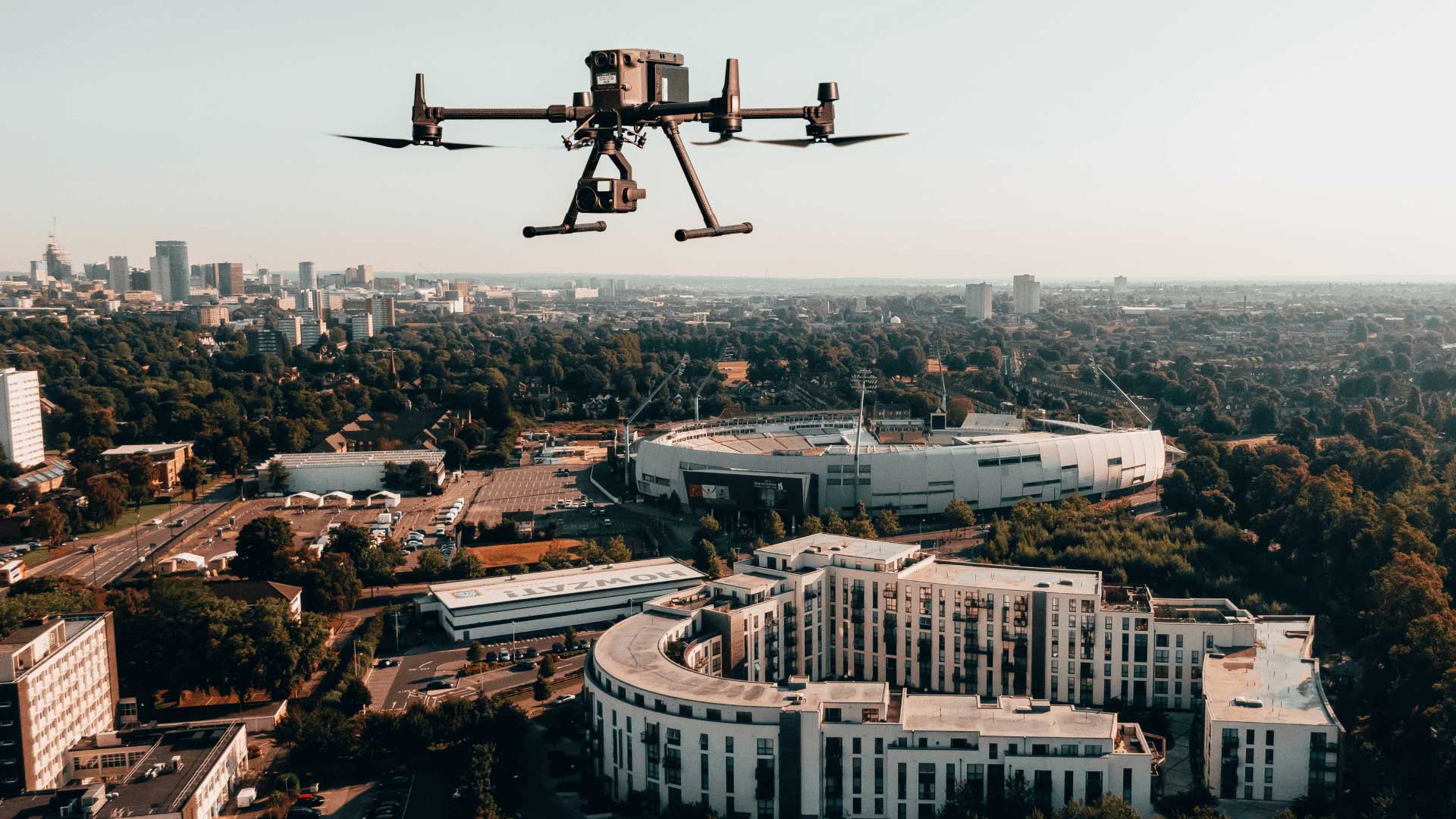
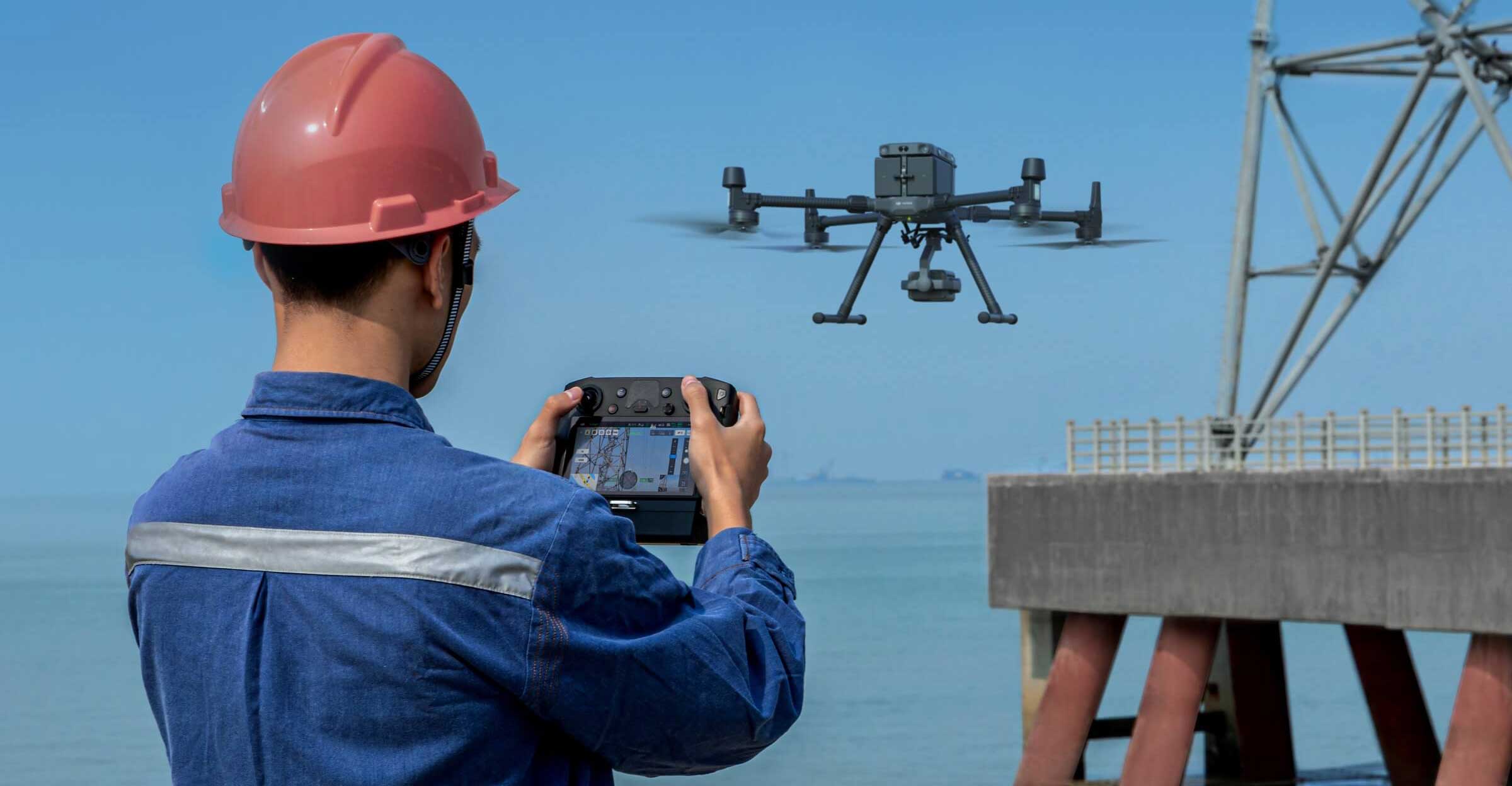
MAXIMUM FLIGHT SPEED
The DJI M300 RTK has a maximum speed of 23m/s. It has a maximum descent speed of 7 m/s, ensuring a fast and safe landing with the ground detection system.

IP45 RATING AND WEATHERPROOFING
This IP45 rating means that the M300 RTK is protected against solid objects larger than 1 mm.
In terms of waterproofing the M300 RTK, the IP45 rating means that the aircraft is protected against low pressure water jets from any angle. DJI stated that the drone can withstand rainfall of 100 mm / 24 h.
In addition to the IP45 rating, the drone can operate in temperatures from -20°C to 50°C, making it a safe and effective platform in a variety of environments.
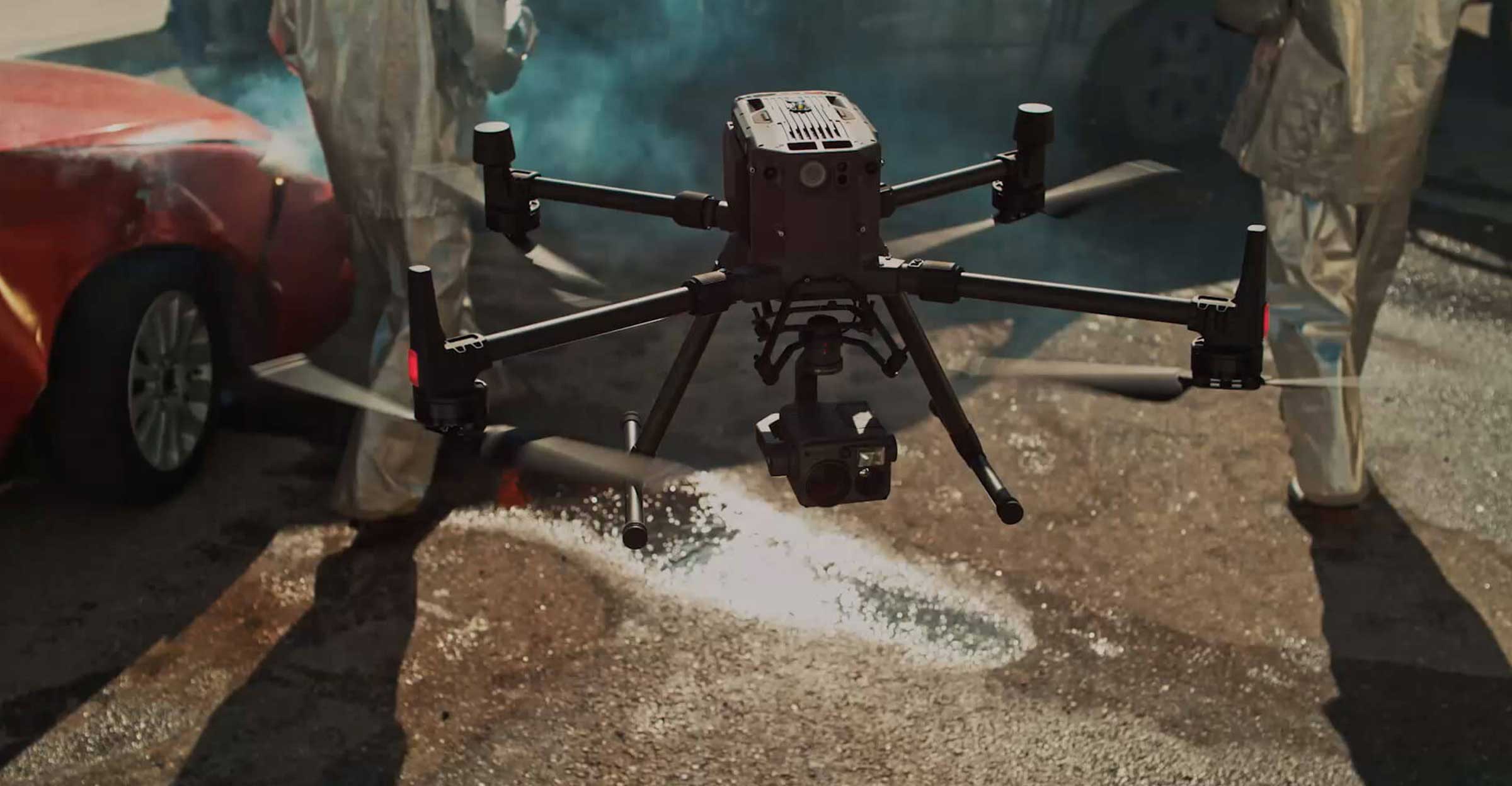
INTELLIGENT INSPECTION
Record mission actions such as aircraft movement, gimbal orientation, photos and zoom level, allowing the creation of mission files for future automated inspections, i.e. the same mission can be replicated automatically in the future.
Automate routine inspections and capture consistent results. Artificial Intelligence recognizes points of interest and identifies them in missions to ensure better positioning. Then, when the mission is executed the next time, gimbal will automatically search for the object of interest and therefore provide accurate results.
Create up to 65,535 waypoints and set various actions for one or more DJI or other marker sensors at each waypoint. Flight path planning is also optimised to maximise the flexibility and efficiency of your missions.

The M300 RTK adopts a new primary flight display that integrates flight, navigation and obstacle information to empower the pilot with an exceptional level of situational awareness.
AVIATION-LEVEL SITUATIONAL AWARENESS
DJI SMART CONTROLLER ENTERPRISE
The M300 RTK comes with the new DJI Smart Controller Enterprise. This device features a 5.5-inch display that maintains clear visibility even in bright sunlight. The transmission is always in 1080p.
Thanks to the DJI Smart Controller Enterprise, pilots are guaranteed aviation-level situational awareness. The remote control has a new main flight display that integrates flight, navigation and obstacle information.
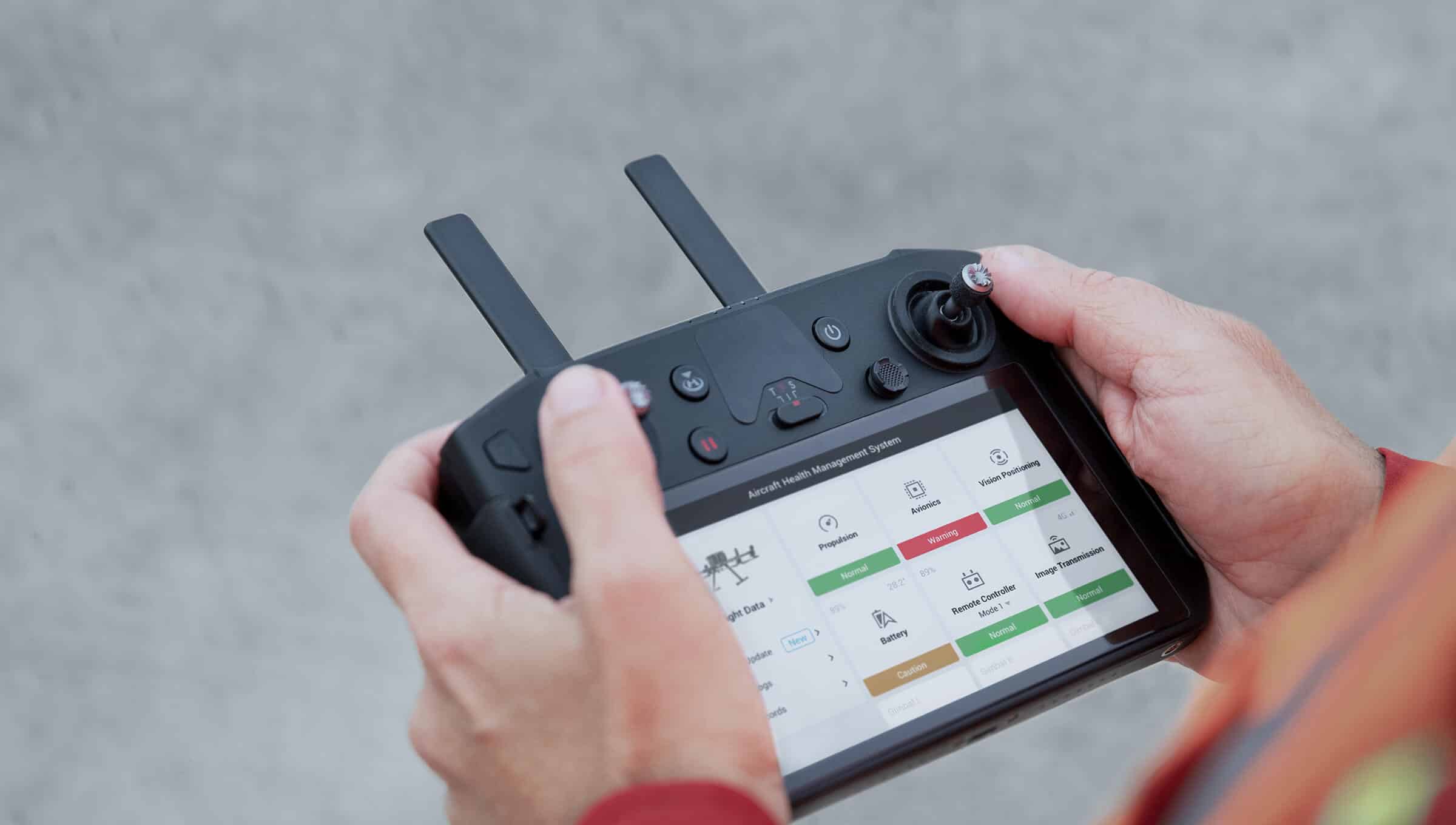
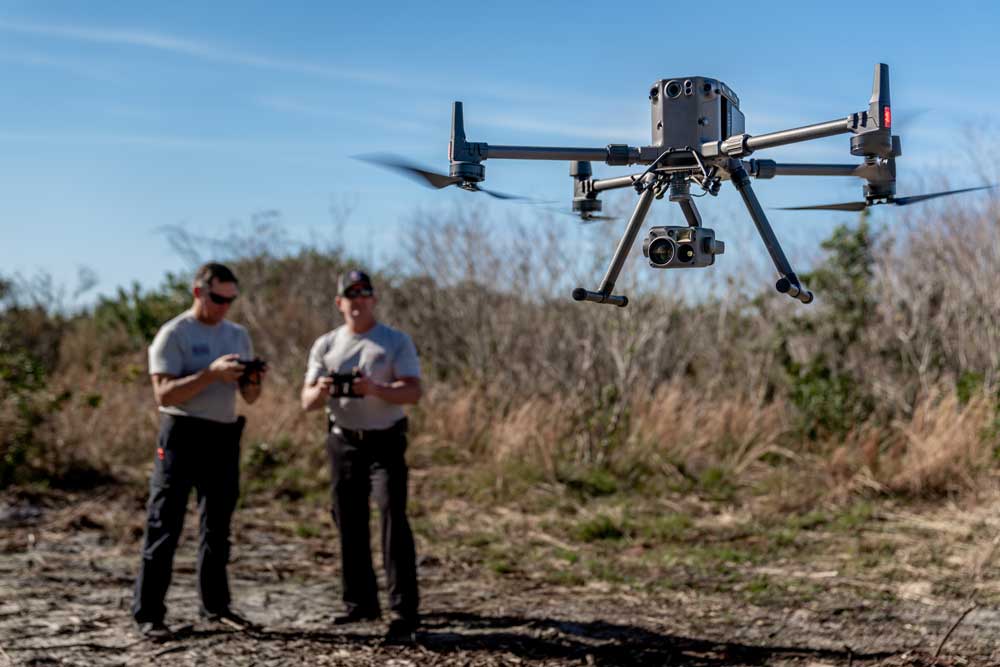
ADVANCED DUAL CONTROL
Advanced Dual Control allows operators to change aircraft control during flight, helping with complex or long-range missions.
Thanks to Advanced Dual Control, BVLOS missions are now possible. This option means that, with a single touch, either operator can control the aircraft or the payload. This allows the drone to take off and land in different locations with different pilots, creating new possibilities for mission strategies. A total of 4 pilots are possible, but only 2 with simultaneous control.

ADVANCED FLIGHT SAFETY
To increase flight safety and aircraft stability, dual vision and TOF sensors appear on six sides of the aircraft, offering a maximum detection range of up to 40m, with the possibility of adjustment in the DJI Pilot app.
Even in complex operating environments, this six-sensor directional and positioning system helps keep the aircraft and missions safe.
The M300 RTK also benefits from advanced integrated redundancy systems such as dual IMU, dual barometer, dual compass and dual RTK antenna and GNSS module.
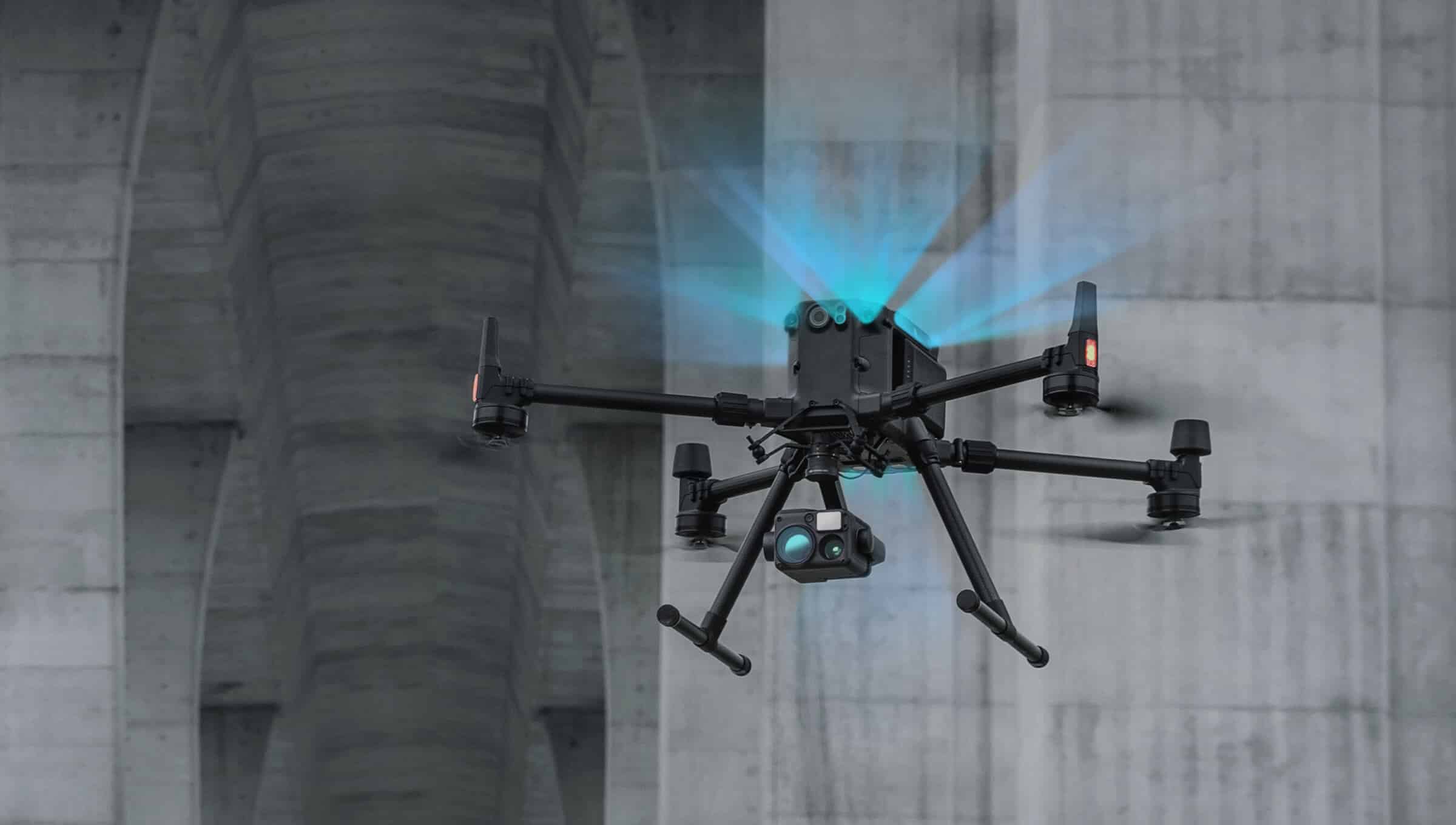
ACCESSORIES
Stay on mission longer with commercial accessories
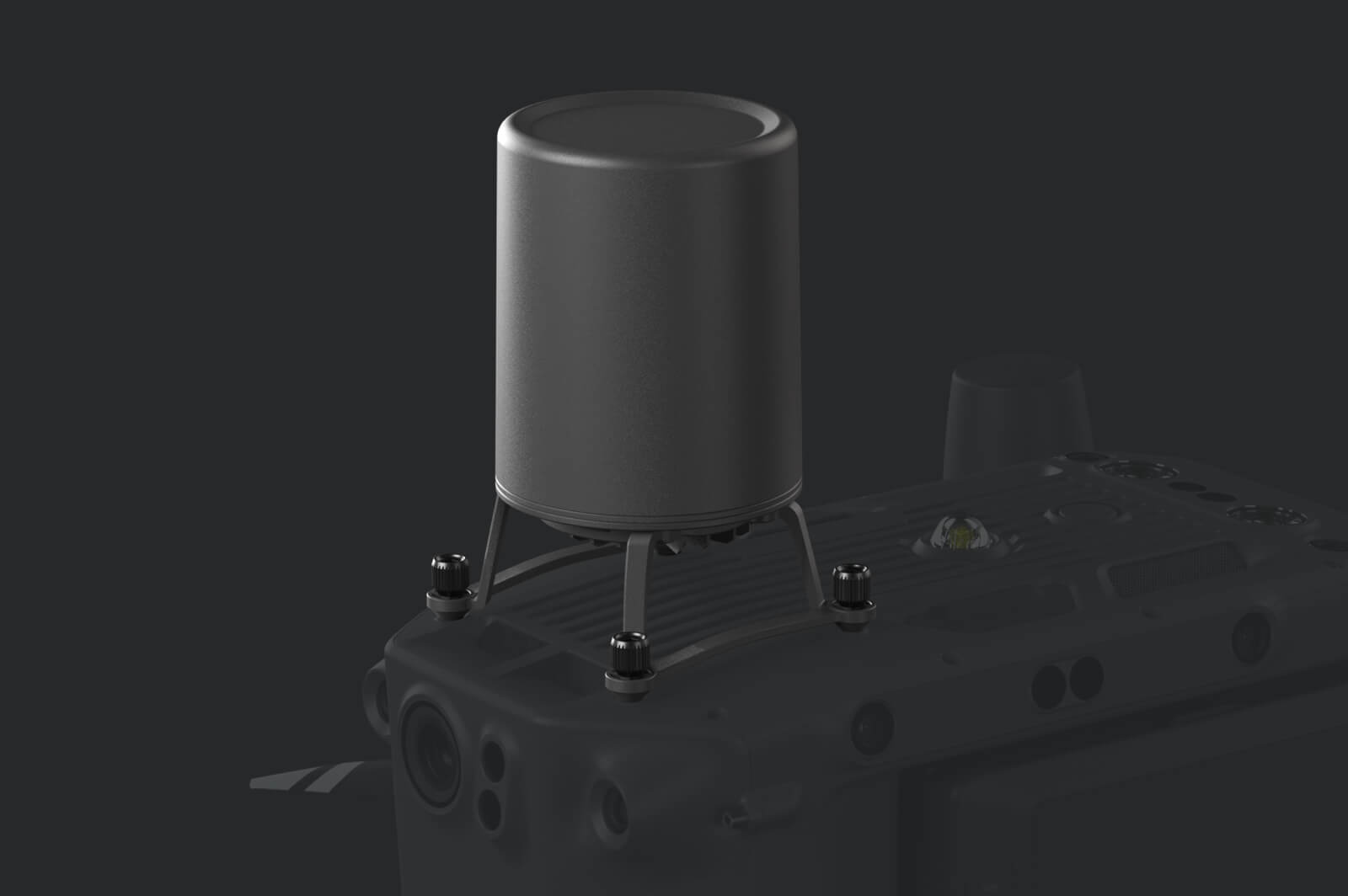
CSM Radar
Allows a 360° reading and detects obstacles such as cables and branches, as well as objects at a distance of up to 30 metres. It is useful for inspections near transmission lines, structures or missions in complex environments. It operates at night and is IP45 rated. It operates at night and is IP45 rated.

D-RTK 2 Mobile Station
Achieve greater relative accuracy with centimetre-accurate positioning data using the high-precision D-RTK 2 mobile station, which supports global satellite navigation systems and provides true time-sensitive differential corrections.
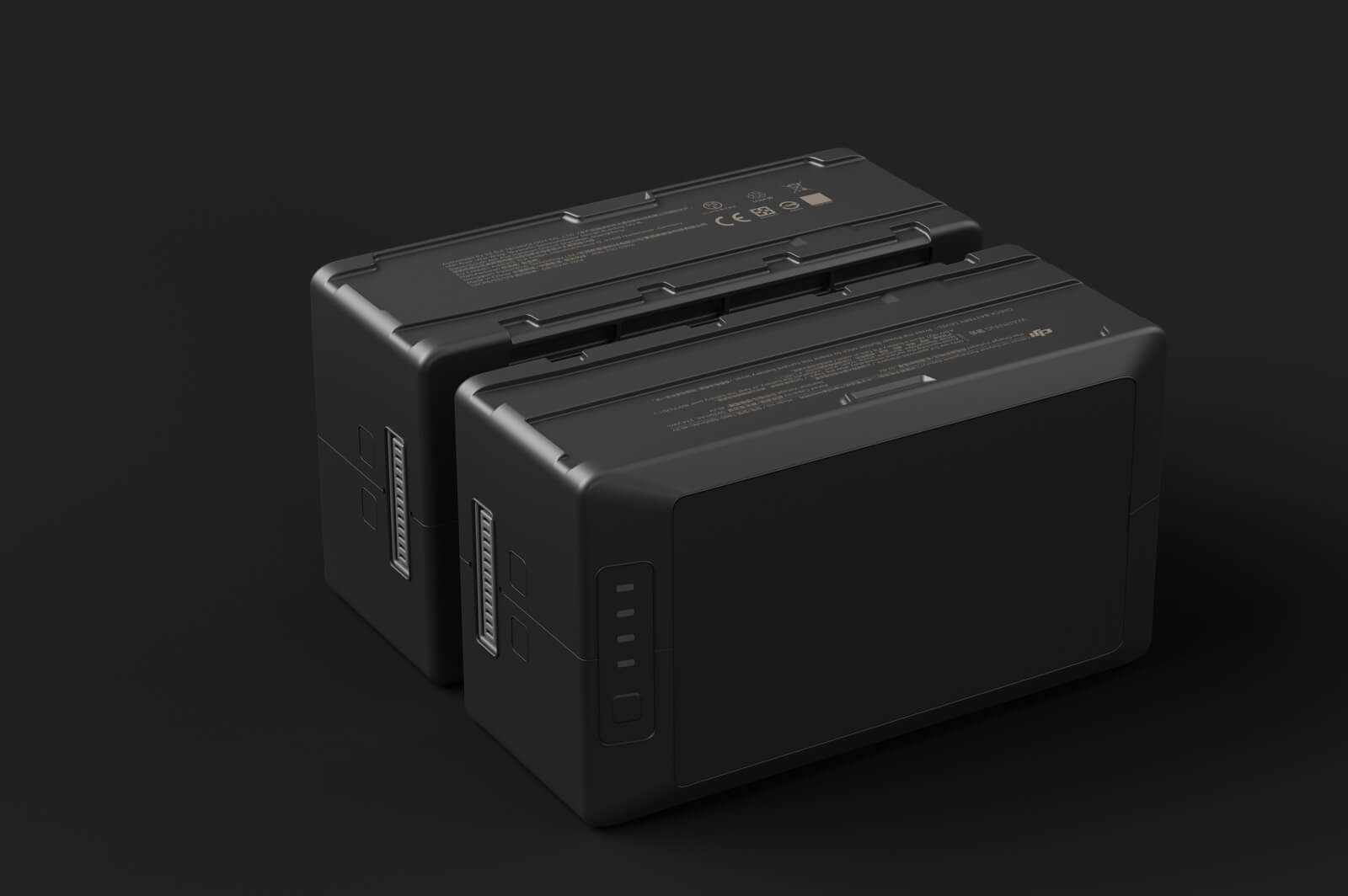
Intelligent Battery TB60
With this new drone comes a new battery.
The TB60 Intelligent Battery is a high-capacity flight battery that allows operators to change batteries without shutting down the drone, saving time during the most critical missions.

BS60 Battery Station
This is a complete charging and storage solution that can manage up to eight M300 RTK batteries and four remote control batteries, and has a fast charging function that will allow you to run missions non-stop. Charges two TB60 batteries in 60 minutes
FREQUENT QUESTIONS
AIRCRAFT
Drone Frequently Asked Questions
Can the lower stabiliser connector be replaced with a dual stabiliser connector?
Yes. For safety, it is recommended that you shut down the aircraft and remove the TB60 Intelligent Flight Batteries before changing the stabiliser connector.
What Ingress protection do the M300 RTK drones have and can it fly in the rain?
The Matrice 300 RTK has an IP45 level of protection. However, this level of protection is not permanently effective and may decrease due to wear and tear. Do not fly in rainfall of more than 100mm per day.
Which propellers are included with the M300 RTK?
The M300 RTK includes 2110 propellers. It is also compatible with 2195 high altitude and noise reduction propellers.
BATTERY
Battery Frequently Asked Questions
How long does it take to fully charge two TB60 Intelligent Batteries?
With a 220 V power supply: Fully charging two TB60 Intelligent Flight Batteries takes about 60 minutes; charging them from 20 to 90 % takes about 30 minutes.
With a 110 V power supply: fully charging two TB60 Intelligent Flight Batteries takes about 70 minutes; charging from 20 to 90 % takes about 40 minutes.
How many batteries can be charged at the same time?
Eight TB60 Intelligent Batteries and four WB37 Intelligent Batteries can be stored in the Battery Station. It is possible to charge two TB60 Intelligent Flight Batteries and one WB37 Intelligent Battery at the same time. The batteries with the highest charge levels will be charged first and then proceed in descending order.
How do I maintain the TB60 Intelligent Flight Batteries?
- Mark two TB60 Intelligent Flight Batteries to be used together to always charge and discharge them at the same time to ensure the best possible performance.
- Do not charge the battery immediately after flight. Allow the battery to cool to room temperature before charging.
- The ideal charging temperature for TB60 Intelligent Battery Flight Batteries is between 15 and 40 °C;
- The ideal storage temperature for TB60 Intelligent Battery Flight Batteries is between 22 and 30 °C. Be sure to store them in a dry place out of direct sunlight.
- If you are not going to use a battery for more than 10 days, discharge it to a level between 40-65% and store it properly. Charge and discharge the battery every three months to keep it in good condition.
Can the TB60 Intelligent Batteries be used in low-temperature environments?
The operating temperature of the TB60 Intelligent Flight Batteries is between -20 and 50 °C. If used at low temperatures, battery life will be reduced. To achieve the best possible performance at low temperatures, it is recommended that the battery is warmed up to a level of 15% before use.
If the batteries are charged at temperatures between -20°C and 5°C, the self-heating function will be activated to raise the temperature of the battery above 5°C.
If the temperature of the battery is low once inserted into the aircraft and switched on, it will self-heat to stay in the range of 16 to 20 °C.
Does the M300 RTK support TB50 / TB55 Intelligent Flight Batteries?
No.
Can TB60 Intelligent Flight Battery be carried onboard an airplene?
The capacity of the Intelligent Battery TB60 is 274 Wh, so it cannot be carried on an aircraft according to airline regulations.
Why is a battery warm while in storage?
When the battery is stored for long periods of time, it is automatically discharged to a level of 65% for safety and to prolong the life of the battery. It is normal for the battery to be warm during this process.
Can a drone take off with two batteries with different battery levels?
The M300 RTK can take off if the difference between the voltage of the two batteries does not exceed 0.7V. If the difference is too great for take-off, a message in the app will inform you that the difference between voltages is too high.
Remote Controller
Remote Control Frequently Asked Questions
Are the M300 RTK remote controls compatible with other DJI products?
No.
What image output port does the DJI Smart Controller Enterprise have?
One HDMI port.
What transmission system does the DJI Smart Controller Enterprise use?
OcuSync Enterprise.
What is the size and resolution of the DJI Smart Controller Enterprise’s screen, and how bright is it?
This remote control has an integrated high-brightness touch screen. The 5.5-inch screen has a maximum brightness of 1000 cd/m² and a resolution of 1920×1080p.
Does the DJI Smart Controller Enterprise support 4G dongles?
Yes. the ZTE MF833V can be used.
Does DJI Smart Controller Enterprise support CrystalSky?
No. Due to the limited processing power of the CrystalSky, it cannot use the advanced smart features of the M300 RTK.
TRANSMISSION
Frequently asked questions about transmission
How many camera feeds can be viewed at the same time?
Dual remote control mode: images from up to 3 cameras (including FPV camera) can be viewed at the same time.
Single remote control mode: images from up to 2 cameras (including the FPV camera) can be viewed at the same time.
Can I capture photos or videos using the FPV camera?
No.
INSTRUMENTS
Frequently asked questions about instruments
Which instruments are compatible with the M300 RTK?
The M300 RTK is compatible with the DJI Zenmuse H20 series, Zenmuse XTS, Zenmuse XT2, Zenmuse Z30 and third-party instruments developed with the DJI Payload SDK.
Download the latest instrument firmware and update the instruments before using them with the M300 RTK.
How many instruments can be mounted at the same time?
The M300 RTK can carry up to three instruments at a time with the dual bottom connector and single top connector.
What possible instrument configurations can be used with the M300 RTK?
The following configurations can be used with the M300 RTK:
Single lower stabilizer: Zenmuse XT2, Zenmuse XT S, Zenmuse Z30, Zenmuse H20, Zenmuse H20T and third-party instruments developed with the PSDK. Two stabilizers: Zenmuse XT2 + Zenmuse Z30; Zenmuse XT2 + Zenmuse H20; Zenmuse XT S + Zenmuse Z30; Zenmuse XT S + Zenmuse H20; and one of the above instruments together with a third-party instrument developed with the PSDK
Three stabilizers: one of the above dual configurations + a third-party instrument developed with the PSDK
Note: The Zenmuse XT2 can only be mounted on the lower right port (left and right sides are determined by looking directly at the drone head-on).
Can I control several stabilizers at the same time?
You can control the movement of several stabilizers at the same time, but you cannot take photos or videos at the same time.
Can I control the FPV camera angle through a remote control?
No, the FPV camera angle cannot be changed.
Can a Zenmuse XT, Zenmuse X4S, Zenmuse X5S or Zenmuse X7 be used with the M300 RTK?
No.
RTK
RTK Frequently Asked Questions
Can PPK technology be used with the M300 RTK?
This will be possible in the near future.
Is the M300 RTK capable of achieving accurate enough inormation for surveying?
When using a third-party instrument designed to capture data with sufficient accuracy for surveying, it is possible to use the M300 RTK to perform surveying missions. The accuracy of the data will depend on the compatibility and performance of the third-party camera. For more information, please use the Contact Us form at the bottom of the page and we will contact you as soon as possible.
Is the M300 RTK compatible with the D-RTK 2 Mobile Station for the M210 RTK V2 or the D-RTK 2 for the Phantom 4 RTK?
Yes. Refer to the M300 RTK user manual and update the D-RTK 2 mobile station firmware. Note that different modes have to be chosen when using the mobile station with the M210 RTK V2, the Phantom 4 RTK or the M300 RTK. The D-RTK 2 Mobile Station can only be compatible with one of these three models at a time. For more information, please refer to the user manual.
How does the M300 RTK acquire real-time differential data?
The M300 RTK obtains real-time differential data in one of two ways:
- Connecting to a D-RTK 2 (RTCM3.2) mobile station.
- By connecting the remote control to an NTRIP Network RTK service via a 4G accessory or Wi-Fi connection (RTCM3.0/RTCM3.1/RTCM3.2 compatible).
Can a single D-RTK 2 mobile station be used with multiple M300 RTK drones at the same time?
Yes, there is no limit to the number of drones that can be used at the same time.
SOFTWARE
Frequently asked questions about software
How do I update the firmware?
- By computer: use DJI Assistant 2 for Matrice on a computer to update the firmware of the aircraft, remote control and D-RTK 2 mobile station.
- With the DJI Pilot app: update the firmware of the aircraft, remote control and BS60 Intelligent Battery Station.
For more information, please refer to the user manual.
What applications and software are supported by M300 RTK?
It is currently only compatible with DJI Pilot (for Android).
Which SDKs are available on the M300 RTK?
The M300 RTK is compatible with the DJI Onboard SDK, the Payload SDK and the Mobile SDK. For technical support, please contact dev@dji.com.
OTHERS
Other frequently questions
Can I use my M300 RTK in different countries or regions?
No. Before purchasing, please confirm with your DJI Enterprise dealer about where the drone can be used.
SPECS
Access to technical specifications
| Dimensions |
Unfolded, propellers and landing gear included: 810 × 670 × 430 mm (length × width × height) Folded, propellers and landing gear included: 430 × 420 × 430 mm (length × width × height) |
| Diagonal distance between axles | 895 mm |
|
Weight (with only a single lower stabilizer)
|
Approx 3.6 kg (with batteries) Approx. 6.3 kg (with two TB60 batteries) |
| Max. load | 2.7 kg |
| Max. take-off weight | 9 kg |
| Operating Frequency |
2.4000-2.4835 GHz 5.725-5.850 GHz |
|
PIRE
|
2.4000-2.4835 GHz: 29.5 dBm (FCC); 18.5 dBm (CE) 18.5 dBm (SRRC); 18.5 dBm (MIC) 5.725-5.850 GHz: 28.5 dBm (FCC); 12.5 dBm (CE) 28.5 dBm (SRRC) |
| Accuracy in hovering flight (P mode, with GPS) |
Vertical: ±0.1 m (Vision System enabled) ±0.5 m (GPS enabled) ±0.1 m (RTK enabled) Horizontal: ±0.3 m (Vision System enabled) ±1.5 m (GPS enabled) ±0.1 m (RTK enabled) |
| RTK Positioning Accuracy |
When RTK enabled and fixed: 1 cm + 1 ppm (Horizontal) 1.5 cm + 1 ppm (Vertical) |
| Max. angular speed | Tilt: 300°/s, Turn: 100°/s |
| Max Pitch Angle | 30° (P-mode, Forward Vision System enabled: 25°) |
| Max Ascent Speed |
S mode: 6 m/s P mode:5 m/s |
| Max Descent Speed (vertical) |
S mode: 5 m/s P mode:4 m/s |
| Max Descent Speed (tilt): | S Mode: 7 m/s |
| Max Speed |
S mode: 23 m/s P mode:17 m/s |
| Maximum flight altitude | 5000 m (with 2110 propellers, takeoff weight ≤7 kg) / 7000 m (with 2195 propellers, takeoff weight ≤7 kg). |
| Max Wind Resistance | 15 m/s |
| Max. flight time | 55 min |
| Supported DJI Gimbals | Zenmuse XT2/XT S/Z30/H20/H20T/DJI P1/DJI L1 |
| Supported Gimbal Configurations | Single lower stabilizer, two lower stabilizers, single upper stabilizer, upper and lower stabilizers, three stabilizers |
| Protection index | IP45 |
| GNSS | GPS+GLONASS+BeiDou+Galileo |
| Operating temperature | From -20 to 50 °C (-4 to 122 °F) |
Remote Control
| Operating Frequency |
2.4000-2.4835 GHz 5.725-5.850 GHz |
| Max. transmission distance (unobstructed, free of interference) |
NCC/FCC: 15 km CE/MIC: 8 km SRRC: 8 km |
| PIRE |
2.4000-2.4835 GHz: 29.5 dBm (FCC); 18.5 dBm (CE) 18.5 dBm (SRRC); 18.5 dBm (MIC) 5.725-5.850 GHz: 28.5 dBm (FCC); 12.5 dBm (CE) 20.5 dBm (SRRC) |
| External battery |
Name: Intelligent Battery WB37 Capacity: 4920 mAh Voltage: 7.6 V Type: LiPo Power: 37.39 Wh Charging time (with BS60 Smart Battery Station): 70 min (from 15 to 45 °C); 130 min (from 0 to 15 °C) |
| Built-in Battery |
Type: 18650 lithium-ion battery (5000 mAh at 7.2 V) Charging: use a USB charger with 12V/2A specification Power rating: 17 W Charging: use a USB charger with 12V/2A specification |
| Battery Life |
Integrated battery: approx. 2.5 h Integrated battery + external battery: approx. 4.5 h |
| USB power supply | 5 V/1.5 A |
| Operating temperature | –20 a 40 °C ( –4 a 104 °F) |
VISION SYSTEM
| Obstacle detection range |
Front/back/left/right: 0.7-40 m Superior/inferior: 0.6-30 m |
| Field of view (FOV) |
Front/back/bottom: 65° (H), 50° (V) Left/right/top: 75° (H), 60° (V) |
| Operating Environment | Well-patterned surfaces and adequate lighting (>15 lux) |
INFRARED DETECTION SYSTEM
| Obstacle detection range | 0.1-8 m |
| Field of view (FOV) | 30° (±15°) |
| Operating Environment | Large, diffuse and reflective obstacles (reflectivity, reflectivity, etc. >10%) |
UPPER AND LOWER AUXILIARY LIGHT
| Effective illumination distance | 5 m |
FPV CAMERA
| Resolution | 960p |
| Field of view (FOV) | 145° |
| Frame rate | 30 fpz |
INTELLIGENT BATTERY FOR FLIGHT
| Name | TB60 |
| Capacity | 5935 mAh |
| Voltage | 52.8 V |
| Battery type | LiPo 12S |
| Energy | 274 Wh |
| Net weight | Aprox. 1.35 kg |
| Operating temperature | From -20 to 50 °C (-4 to 122 °F) |
| Storage temperature: | De 22 a 30 °C (de 71.6 a 86 °F) |
| Charging time |
–20 a 40 °C ( –4 a 104 °F) (When the temperature is below 5°C, the self-heating function is automatically activated. Charging at low temperatures may reduce battery life). |
| Charging time |
With the BS60 Smart Battery Station: 220 V input: 60 minutes (full charge of two TB60 batteries), 30 minutes (charge of two TB60 batteries from 20 to 90 %) 110 V input: 70 minutes (full charge of two TB60 batteries), 40 minutes (charge of two TB60 batteries from 20 to 90 %) |
INTELLIGENT BATTERY STATION BS60
| Dimensions | 501 × 403 × 252 mm |
| Net weight | 8.37 kg |
| Maximum capacity |
TB60 Intelligent Flight Battery × 8 WB37 Smart Battery × 4 |
| Input | 100-120 VAC, 50-60 Hz/220-240 VAC; 50-60 Hz |
| Max. input power | 1070 W |
| Power output |
100-120 V: 750 W 220-240 V: 992 W |
| Operating temperature | –20 a 40 °C ( –4 a 104 °F) |







